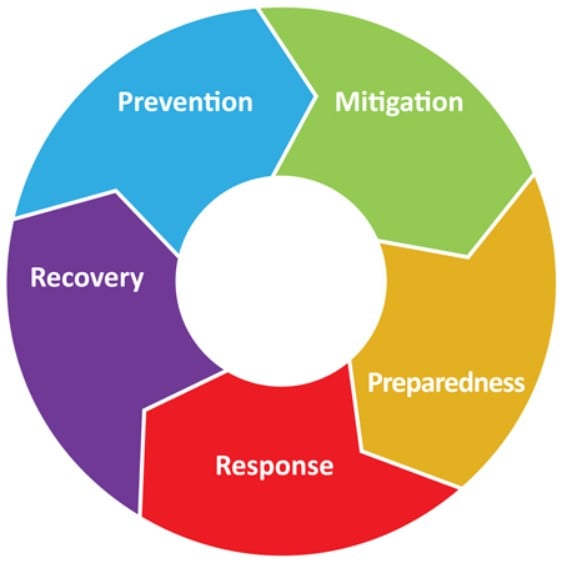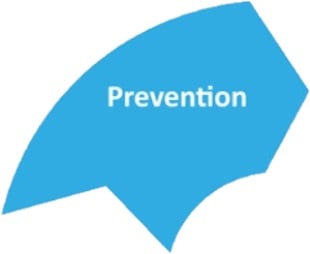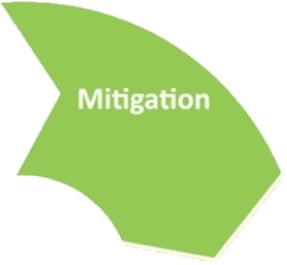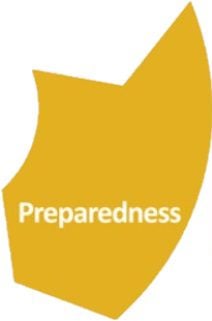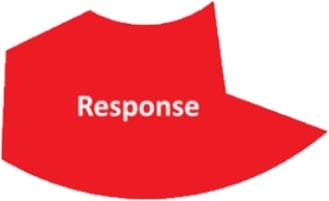

Cassidy Freeman
Mercer County Emergency Management Specialist
If your home or buildings have been damaged or destroyed by the recent storms, Ohio law requires that you complete the DTE Form 26 and return it to the County Auditor’s Office. Once our office receives this form, a property appraiser will visit your property to gather information and take pictures. After inspecting your property, we can make an adjustment to your property’s appraised value based on the severity of the damage.
Mail Forms to:
Mercer County Auditor’s Office
101 N Main St. Rm. 105
Celina, Ohio 45822
The 5 Phases of Emergency Management
5 Phases of Emergency Management | Organizational Resilience | University of Nevada, Reno (unr.edu)
Prevention focuses on preventing hazards from occurring, whether they are natural, technological or caused by humans. Not all hazards are preventable, but the risk of loss of life and injury can be limited with good evacuation plans, environmental planning and design standards.
Mitigation is the effort to reduce loss of life and property by lessening the impact of disasters and emergencies. It refers to measures or actions that can prevent an emergency, reduce the chance of an emergency or reduce the damaging effects of unavoidable emergencies. The establishment of building codes and zoning requirements or the creation of defensible space around homes to protect them from wildfire are examples of mitigation efforts.
Preparedness is a continuous cycle of planning, organizing, training, equipping, exercising, evaluating and taking corrective action. Training and exercising plans is the cornerstone of preparedness, which focuses on readiness to respond to all hazards, incidents and emergencies. Training and emergency preparedness plans increase a community’s ability to respond when a disaster occurs. Typical preparedness measures include developing mutual aid agreements and memorandums of understanding, training for both response personnel and concerned citizens, conducting disaster exercises to reinforce training and test capabilities, and presenting all-hazards education campaigns.
The response phase is a reaction to the occurrence of a catastrophic disaster or emergency. It consists of actions which are aimed at saving lives, reducing economic losses and alleviating suffering. The response phase comprises the coordination and management of resources utilizing the Incident Command System. Response actions may include activating the emergency operations center, evacuating threatened populations, opening shelters and providing mass care, emergency rescue and medical care, fire fighting, and urban search and rescue.
Recovery consists of those activities that continue beyond the emergency period to restore critical community functions and begin to manage stabilization efforts. The recovery phase begins immediately after the threat to human life has subsided. The goal of the recovery phase is to bring the affected area back to some degree of normalcy, including the restoration of basic services and the repair of physical, social and economic damages. Typical recovery actions include debris cleanup, financial assistance to individuals and governments, rebuilding of roads and bridges and key facilities, and sustained mass care for displaced human and animal populations.
Office Hours
Monday: 7:30 a.m. to 4:00 p.m.
Tuesday: 7:30 a.m. to 4:00 p.m.
Wednesday: 7:30 a.m. to 4:00 p.m.
Thursday: 7:30 a.m. to 4:00 p.m.
Friday: 7:30 a.m. to 4:00 p.m.
Contact Us
Emergency Management Agency
321 Riley St
Celina, OH 45822
